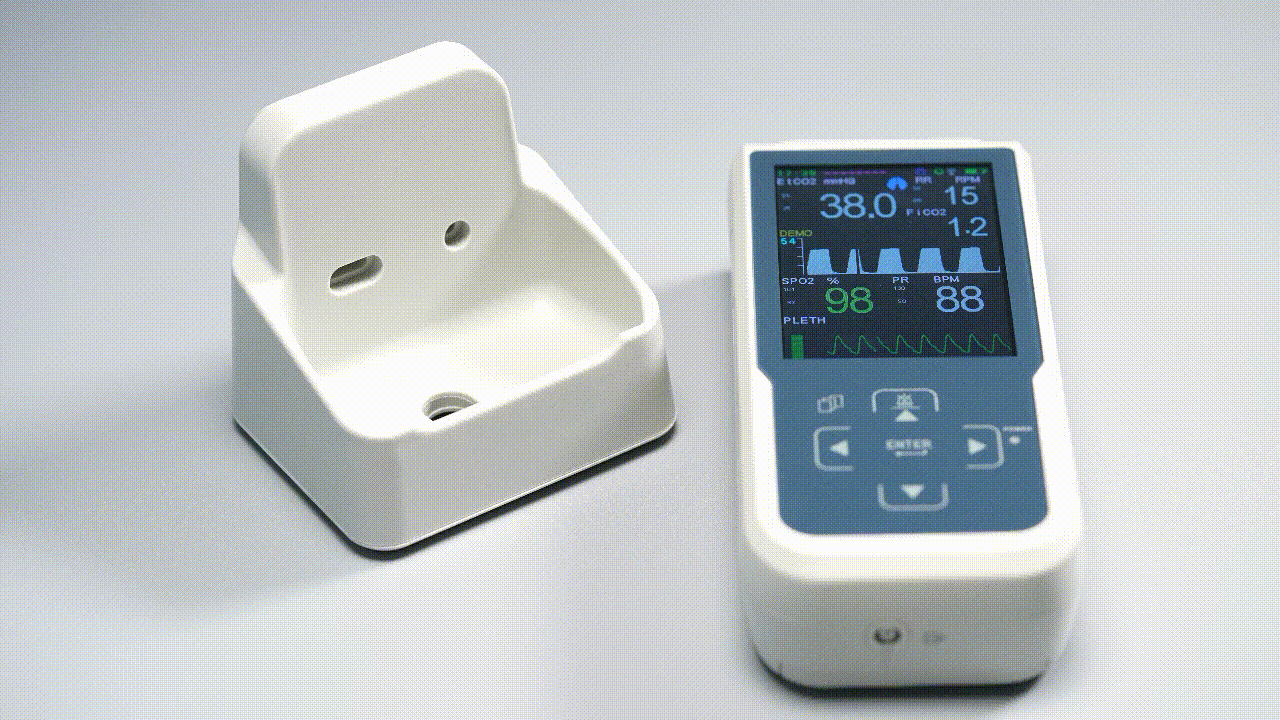Introduction to the Monitoring and Technical Advantages of End-tidal Carbon Dioxide (ETCO2)
End-tidal Carbon Dioxide (ETCO2) monitoring is a non-invasive, simple, real-time, and continuous monitoring method with significant advantages and technical features in clinical medical practice. Below is a detailed introduction to its monitoring and technical advantages.
High Sensitivity and Non-invasiveness:
ETCO2 monitoring can provide real-time reflections of the patient's respiratory status with high sensitivity for assessing airway obstruction and ventilation adequacy.
This method is non-invasive, posing no additional pain or risk to patients and suitable for patients of all ages, including children and infants.
Real-time Monitoring and Continuity:
ETCO2 monitoring continuously provides respiratory data for the patient, allowing doctors to promptly detect respiratory abnormalities.
Continuous monitoring aids doctors in assessing treatment effectiveness and adjusting treatment plans accordingly.
Assessment of Ventilation Function:
By monitoring ETCO2, doctors can assess the patient's alveolar ventilation function to understand whether there is hypoventilation or hyperventilation.
During artificial ventilation, ETCO2 monitoring can be used to evaluate ventilation effectiveness, ensuring adequate oxygen supply and carbon dioxide excretion for the patient.
Guidance for Ventilator Parameter Adjustment:
ETCO2 monitoring results can serve as a basis for adjusting ventilator parameters, ensuring that the ventilator provides neither too much nor too little ventilation to avoid hypercapnia or hypocapnia.
During general anesthesia or respiratory insufficiency, ETCO2 values can be used to adjust ventilation volume and maintain stable vital signs.
Confirmation of Airway Position:
After tracheal intubation, ETCO2 monitoring can confirm whether the catheter is located in the trachea, reducing the risk of misinsertion or dislodgment.
This method is more accurate and reliable than traditional auscultation, especially in extreme cases.
Monitoring Effectiveness of Resuscitation Efforts:
During cardiopulmonary resuscitation, ETCO2 monitoring can assess the effectiveness of resuscitation efforts, providing timely feedback to doctors.
An initial PETCO2 below 12.5 mmHg indicates very little blood flow; a sudden increase in PETCO2 above 40 mmHg may suggest return of spontaneous circulation (ROSC).
Infrared Absorption Spectrophotometry:
The most clinically applied method for ETCO2 monitoring is infrared absorption spectrophotometry, which measures based on the absorption characteristics of carbon dioxide for specific wavelengths of infrared light.
Infrared absorption spectrophotometry is accurate, stable, and reliable.
Sidestream and Mainstream Monitoring:
Sidestream monitoring uses a pump to draw exhaled gas into a measurement chamber for analysis, suitable for non-sealed airways with diverse sampling sites.
Mainstream monitoring directly measures airflow passing through the measurement chamber, less affected by moisture and secretions in the airway, offering real-time monitoring without delay and high accuracy.
Both methods have their advantages, and doctors can choose the appropriate monitoring method based on the patient's specific conditions.
Miniaturization and Easy Connectivity:
ETCO2 monitoring devices are small in size and easy to connect, making them a routine monitor in ambulances.
This miniaturization and easy connectivity make ETCO2 monitoring valuable in emergency and transport situations.
Audible and Visual Alarm Systems:
Modern ETCO2 monitoring devices are typically equipped with audible and visual alarm systems that sound and flash when measurement values exceed thresholds or the device malfunctions.
This alarm system helps doctors promptly detect and address abnormalities, ensuring patient safety.
In summary, ETCO2 monitoring offers significant monitoring and technical advantages in clinical medical practice, providing doctors with timely and accurate respiratory data for patients, aiding in treatment evaluation, treatment plan adjustment, and ensuring patient safety.
